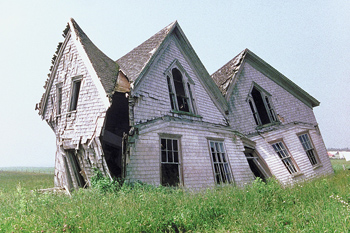
BLOG
How to Assess the Real Cost of a Fixer-Upper House
When you buy a fixer-upper house, you can save a ton of money, or get yourself in a financial fix. People see shows on television and think it's easy to purchase a home that needs fixing. Know what you are getting into before you put the money down on the table! Call me with your questions Laura Key 310.866.8422
1. Decide what you can do yourself
TV remodeling shows make home improvement work look like a snap. In the real world, attempting a difficult remodeling job that you don’t know how to do will take longer than you think and can lead to less-than-professional results that won’t increase the value of your fixer-upper house.
- Do you really have the skills to do it? Some tasks, like stripping wallpaper and painting, are relatively easy. Others, like electrical work, can be dangerous when done by amateurs.
- Do you really have the time and desire to do it? Can you take time off work to renovate your fixer-upper house? If not, will you be stressed out by living in a work zone for months while you complete projects on the weekends?
2. Price the cost of repairs and remodeling before you make an offer
- Get your contractor into the house to do a walk-through, so he can give you a written cost estimate on the tasks he’s going to do.
- If you’re doing the work yourself, price the supplies.
- Either way, tack on 10% to 20% to cover unforeseen problems that often arise with a fixer-upper house.
3. Check permit costs
- Ask local officials if the work you’re going to do requires a permit and how much that permit costs. Doing work without a permit may save money, but it'll cause problems when you resell your home.
- Decide if you want to get the permits yourself or have the contractor arrange for them. Getting permits can be time-consuming and frustrating. Inspectors may force you to do additional work, or change the way you want to do a project, before they give you the permit.
- Factor the time and aggravation of permits into your plans.
4. Doublecheck pricing on structural work
If your fixer-upper home needs major structural work, hire a structural engineer for $500 to $700 to inspect the home before you put in an offer so you can be confident you’ve uncovered and conservatively budgeted for the full extent of the problems.
Get written estimates for repairs before you commit to buying a home with structural issues.
Don't purchase a home that needs major structural work unless:
- You’re getting it at a steep discount
- You’re sure you’ve uncovered the extent of the problem
- You know the problem can be fixed
- You have a binding written estimate for the repairs
5. Check the cost of financing
Be sure you have enough money for a downpayment, closing costs, and repairs without draining your savings.
If you’re planning to fund the repairs with a home equity or home improvement loan:
- Get yourself pre-approved for both loans before you make an offer.
- Make the deal contingent on getting both the purchase money loan and the renovation money loan, so you’re not forced to close the sale when you have no loan to fix the house.
- Consider the Federal Housing Administration’s Section 203(k) program, which is designed to help home owners who are purchasing or refinancing a home that needs rehabilitation. The program wraps the purchase/refinance and rehabilitation costs into a single mortgage. To qualify for the loan, the total value of the property must fall within the FHA mortgage limit for your area, as with other FHA loans. A streamlined 203(k) program provides an additional amount for rehabilitation, up to $35,000, on top of an existing mortgage. It’s a simpler process than obtaining the standard 203(k).
6. Calculate your fair purchase offer
Take the fair market value of the property (what it would be worth if it were in good condition and remodeled to current tastes) and subtract the upgrade and repair costs.
For example: Your target fixer-upper house has a 1960s kitchen, metallic wallpaper, shag carpet, and high levels of radon in the basement.
Your comparison house, in the same subdivision, sold last month for $200,000. That house had a newer kitchen, no wallpaper, was recently recarpeted, and has a radon mitigation system in its basement.
The cost to remodel the kitchen, remove the wallpaper, carpet the house, and put in a radon mitigation system is $40,000. Your bid for the house should be $160,000.
Ask your real estate agent if it’s a good idea to share your cost estimates with the sellers, to prove your offer is fair.
7. Include inspection contingencies in your offer
Don’t rely on your friends or your contractor to eyeball your fixer-upper house. Hire pros to do common inspections like:
- Home inspection. This is key in a fixer-upper assessment. The home inspector will uncover hidden issues in need of replacement or repair. You may know you want to replace those 1970s kitchen cabinets, but the home inspector has a meter that will detect the water leak behind them.
- Radon, mold, lead-based paint
- Septic and well
- Pest
Most home inspection contingencies let you go back to the sellers and ask them to do the repairs, or give you cash at closing to pay for the repairs. The seller can also opt to simply back out of the deal, as can you, if the inspection turns up something you don’t want to deal with.
If that happens, this isn’t the right fixer-upper house for you. Go back to the top of this list and start again.
Source: www.houselogic.com - G.M. Filisko is an attorney and award-winning writer whose parents bought and renovated a fixer-upper when she was a teen. A regular contributor to many national publications including Bankrate.com, REALTOR® Magazine, and the American Bar Association Journal, she specializes in real estate, business, personal finance, and legal topics.
Remodeling’s ‘Value’ on the Upswing
Now that the housing market is back, home improvements are, too. And they’re paying off better than in years past. 2013 is shaping up pretty sweetly for home owners.
First, there were the home owner-centric tax benefits (energy tax credits, PMI deduction,mortgage debt forgiveness) that Congress and the President extended through 2013; and now, we’re seeing that our home improvement dollars are working harder.
After several bruising years, spending on remodeling projects is up and so too is your return on your remodeling dollars. The national average percentage recoup on all 35 projects in Remodeling Magazine’s 2013 Cost vs. Value Report rose since last year.
What a different story from 2012, when the ROI dropped in all but three categories.
The annual report is based on a survey that asks REALTORS® around the country to estimate what specific projects, from adding an attic bedroom to installing new windows, would recoup in their market at resale under current conditions.
Of course, what you recoup depends on the specifics of your project, your market, and when you sell. But the report offers a great bird's-eye view of project costs and returns.
So which projects offer the best value for the money?
Exterior projects like siding, window, and garage door replacements took seven of the top 10 spots in this year’s list.
Makes sense since REALTORS® always say curb appeal is half the battle when you’re trying to sell.
Although it’s not in the top 10, I was gratified to see that the backup generator project is up about 5 percentage points since 2012. One of our bloggers, Lisa Kaplan Gordon, invested in a portable generator last year after one too many storms and power outages, and despite the learning curve, she was glad she did. She had power when a lot of her neighbors didn’t; she even shared power.
Indoors, the top-10 projects include a minor kitchen remodel (involving cabinet refacingand new countertops and appliances), which recouped 75.4% nationally.
Kitchen redo aside, replacement projects, such as installing an entry door or new siding,tend to have a higher cost-to-value ratio than remodeling projects. But now that housing has turned a corner, home owners are stepping up their remodeling plans.
Harvard’s Joint Center for Housing Studies saw 9% growth in remodeling in 2012 and predicts that trend will continue as more and more distressed properties are bought and rehabbed.
The housing group says interest in energy-efficiency updates will keep on trucking, too. It’s the one area where spending on remodeling projects rose during the recession.
I’m betting the revived energy tax credit will add fuel to that trend.
By: Christina Hoffmann Published: January 24, 2013
www.KeyCaliforniaHomes.com • Laura.A.Key@gmail.com
